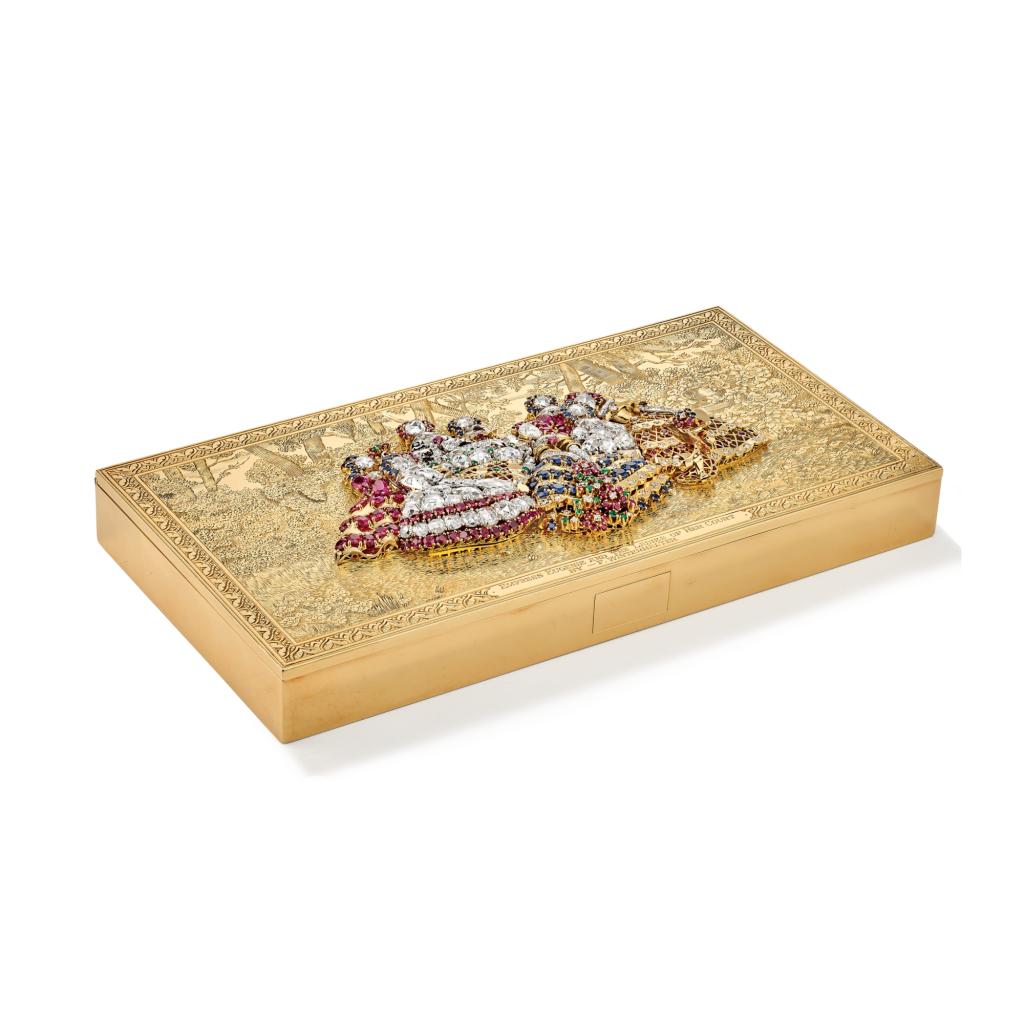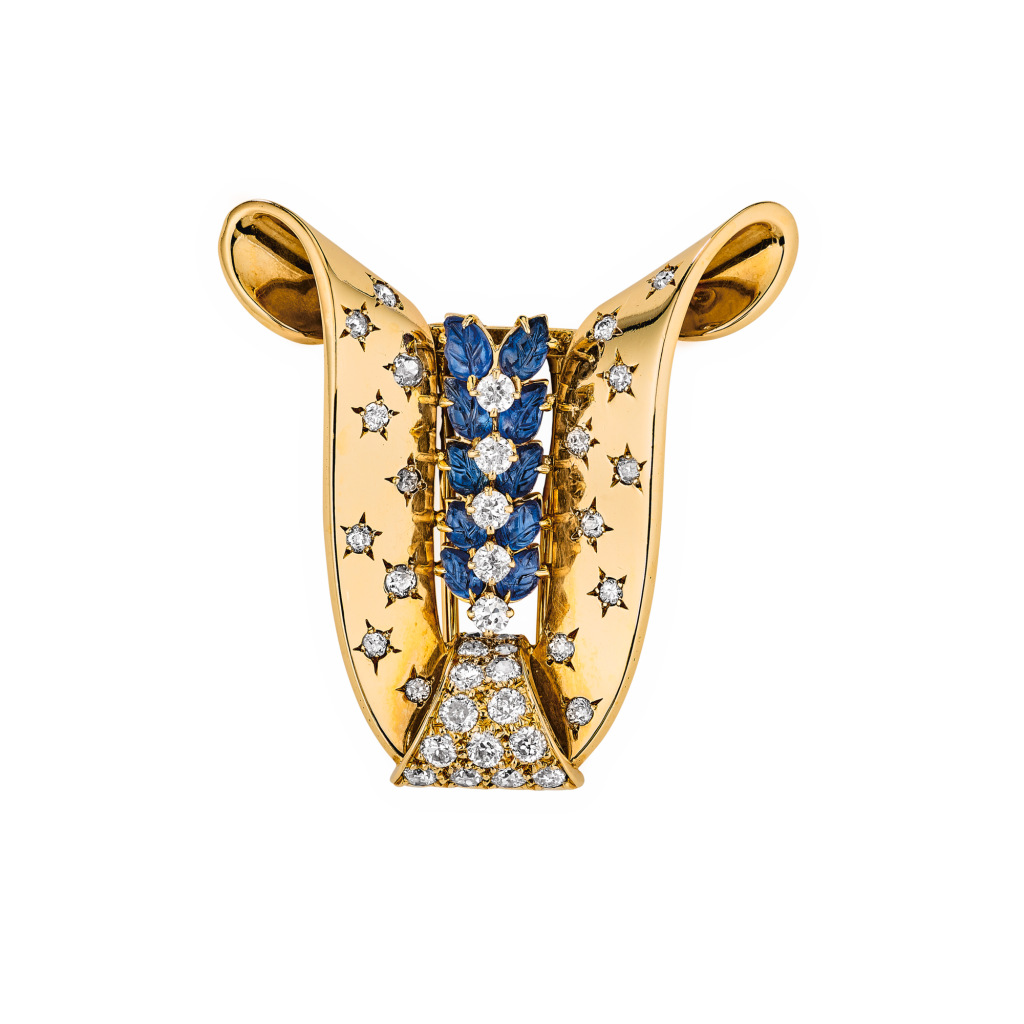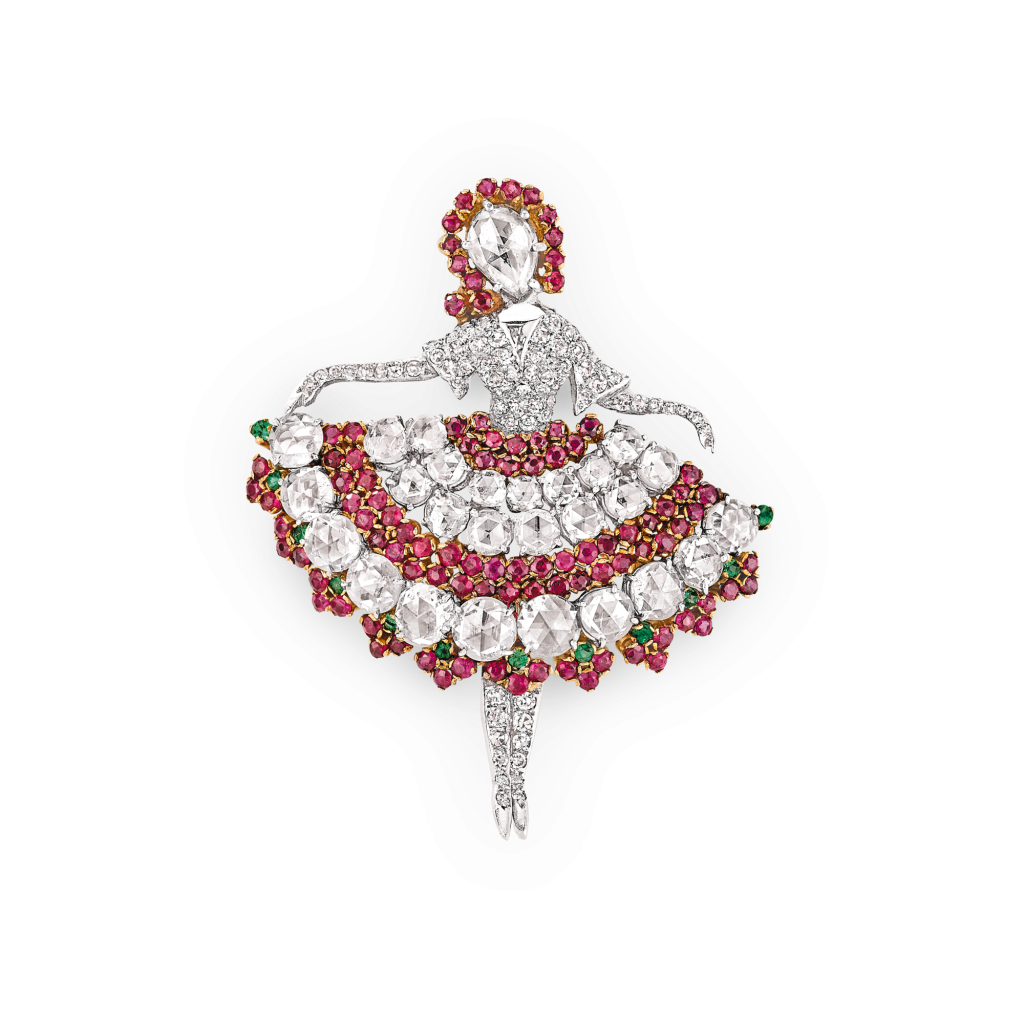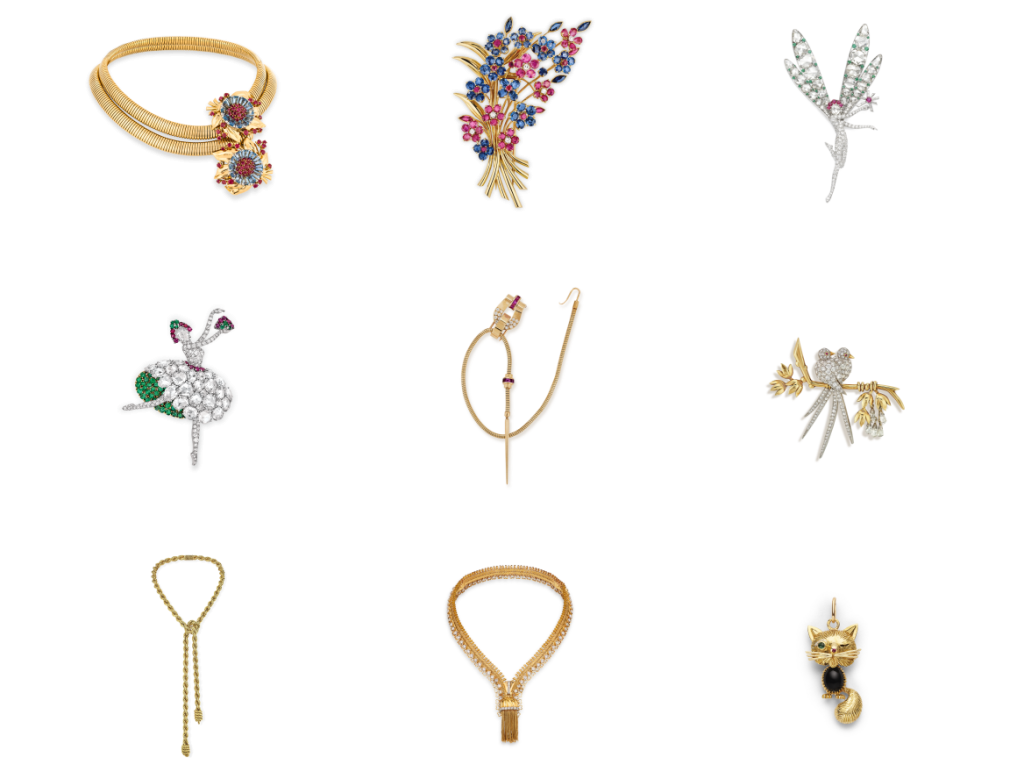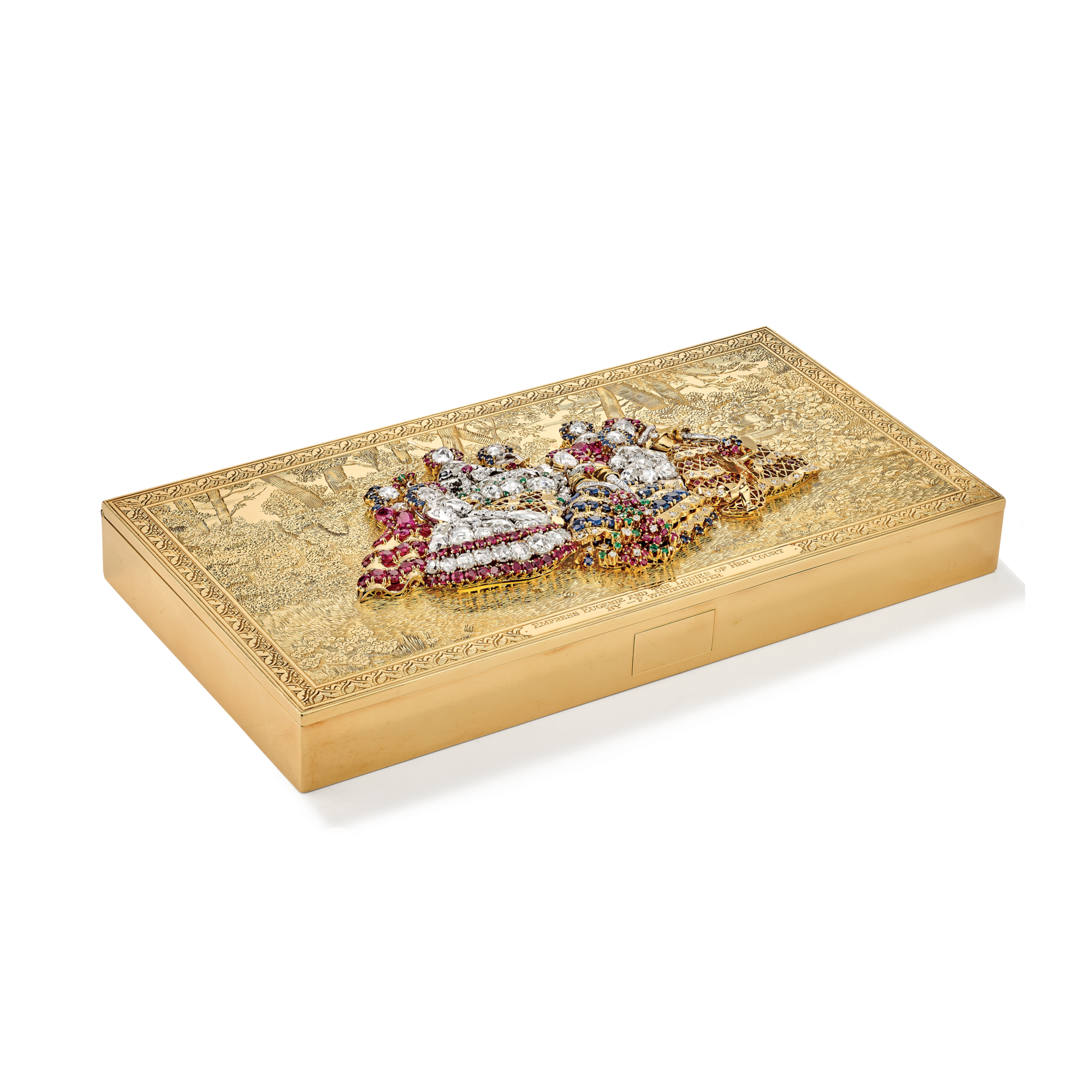
Empress Eugénie Minaudière

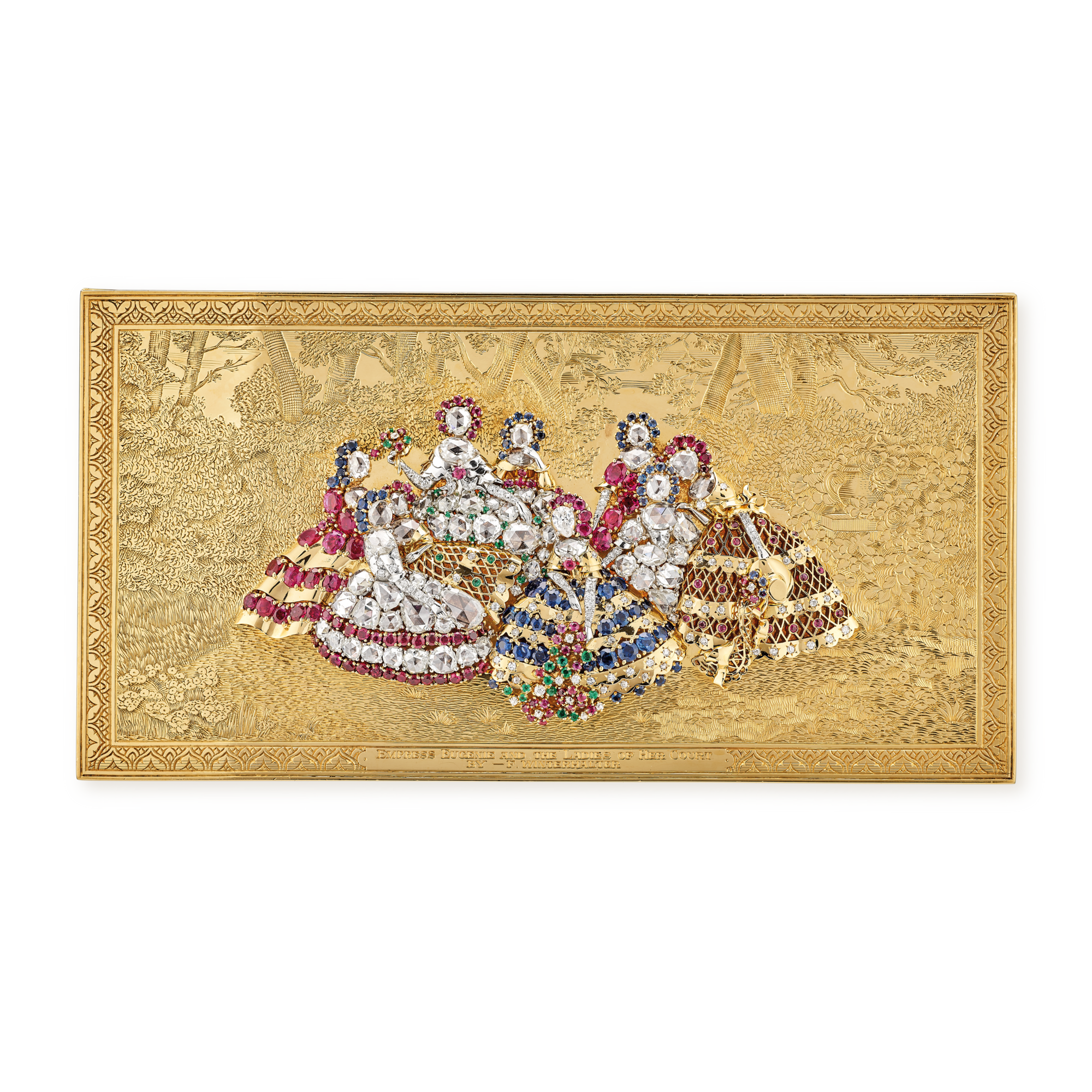
Creation details
- Creation year 1942
- Stone Diamond
- Stone Emerald
- Stone Ruby
- Stone Sapphire
- Material Gold
- Usage Minaudière
- Dimensions 175 × 95 × 30 mm
This Minaudière, with its lid decoration inspired by the famous portrait of Empress Eugénie Surrounded by Her Ladies in Waiting by Franz Xaver Winterhalter dating from 1855, makes clear reference to the Second Empire style.
Although the jewelry techniques and dimensions of the Minaudière do not allow every detail of the painter’s composition to be conveyed, the postures of the figures are faithful to the original work. The wooded background is delicately rendered with an engraved effect across the entire yellow gold lid, while each of the female figures, grouped in the center of the box, is distinguished by her finery. Each one is dressed “in the 1860s fashion,” some with crinoline skirts depicted with yellow gold lace dotted with diamonds, rubies, and emeralds; others completely covered with claw-set oval diamonds. Another group have alternate rows of sapphires and scallop-edged yellow gold, interspersed with star-set, brilliant-cut diamonds or polished yellow gold flounces and rows of rubies. The faces are depicted with a single rose-cut diamond, crowned with round rubies or sapphires, symbolizing their hairstyles bedecked with ribbons. The composition is contained by an engraved frame with a cartouche on its lower edge with an explicit reference to the work: “Empress Eugénie and the Ladies of Her Court [/] by – F. Winterhalter.”
Minaudiere with decorative ornements
In the 1930s, the decoration on Minaudières was mainly confined to their clasps, while in the 1940s their lids were frequently decorated with figures, as in this 1942 example. This box actually dates from 1941; indeed, its first version was decorated with two flowers in platinum and diamonds. Its current decoration did not appear until the following year, and was made for the Maison’s American clientele, who were extremely fond of the Second Empire style.
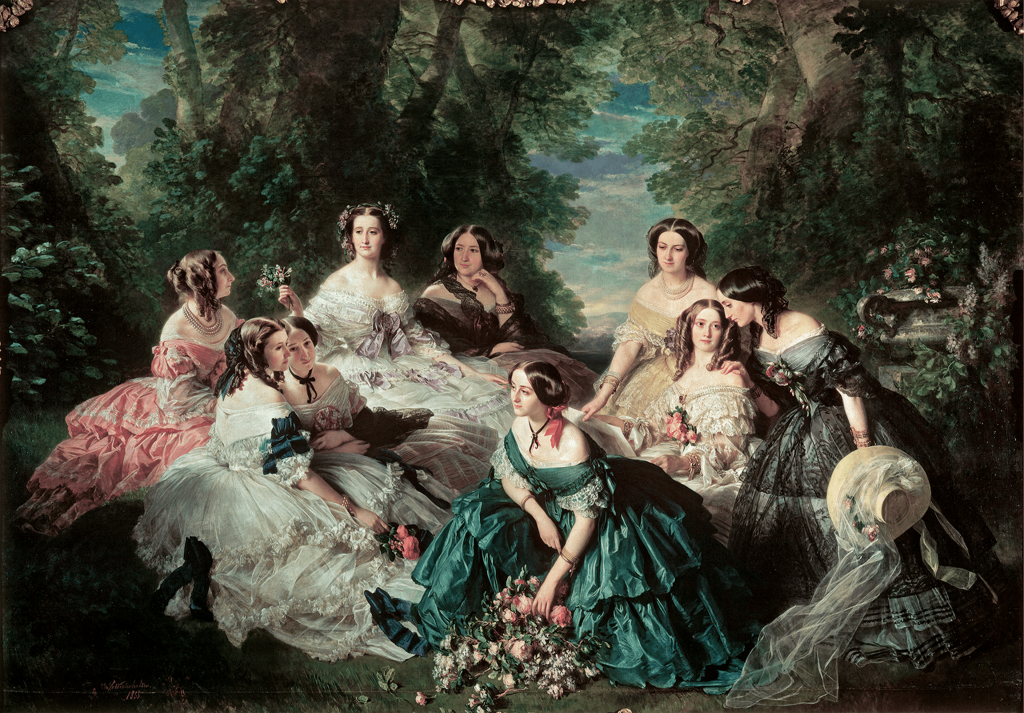
The return of the Second Empire style
In the 1940s, a historicist wave, referring to the arts of the second half of the nineteenth century, descended on the world of fashion and jewelry. While “the Second Empire […] provided crinolines”1Anonymous, “Panorama des lignes et couleurs dominantes des collections,” Album de la mode du Figaro, no. 2 (Summer 1943): 70–71. inspiring wide-skirted dresses or ones with panniers, “necklaces mounted with rosettes [and] bracelets imitating fabric recalled the fact that Eugénie de Montijo was Empress of the French people.”2Anonymous, “Bijoux nobles reflets,” Album de la mode du Figaro, no. 1 (Winter 1942–1943): 70. The puffed-out silhouette of crinoline was also found in the creations of the couturier Marcel Rochas,3Anonymous, “Panorama des lignes et couleurs dominantes des collections,” Album de la mode du Figaro, no. 2 (Summer 1943): 70–71. as well as in the richly embroidered dresses, Junon and Vénus, made by Christian Dior in 1949.4Natasha Fraser-Cavassoni, Christian Dior. Couturier du rêve [exhib. cat.] (Paris: Musée des arts décoratifs, 2017), 94.
This 1942 Minaudière was one of the earliest witnesses of the return to favor of the Second Empire style in France, which lasted until the early 1950s in some of the Maison’s creations.
To go deeper
